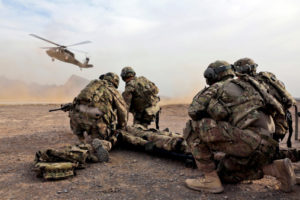Uncontrolled hemorrhage is life threatening for trauma victims, and transfusion of blood products along with hemorrhage control is critical for patient survival. Whole blood (WB) transfusions have been used in the military setting since World War I. Cold stored low-titer type O WB (CS-LTOWB) (anti-A and anti-B <1:256) transfusions were first used during the Korean and Vietnam Wars; but WB transfusions were later replaced with transfusions of crystalloids and blood components. Since 2014, the military has recommended WB transfusions for hemorrhaging trauma patients. In 2016, the US Army implemented a program to ship FDA-approved CS-LTOWB to Iraq, Syria and Afghanistan. Researchers recently evaluated blood product utilization on the battlefield in Iraq, Syria and Afghanistan from January 2016 through December 2017. Of the 56,818 blood products shipped to these settings, 9,882 units were transfused (17.4%). During this time, WB use increased from 2.1% to 6.6%; and CS-LTOWB used increased from 0.5% to 4%. Although it has as short shelf-life, CS-LTOWB has several clinical and practical advantages over other blood products, and its use is expected to increase for both civilian and military trauma patients.
Reference:

